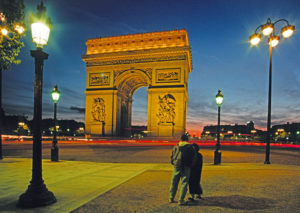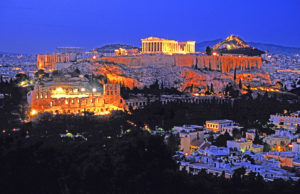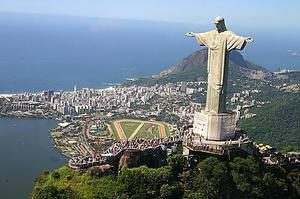
Paris night at the Arc de Triomphe. Photo by Dennis Cox/WorldViews
In my last post, Where to Go in 2018 (and Beyond), I presented what I consider to be the essential destinations in the U.S. (primarily cities and national parks), the essential European countries, and the essential counties in the rest of the world.
By essential, I mean those which any dedicated traveler should seek out to establish their “travel literacy,” if you will. They are not necessarily my favorite countries and destinations, but those that offer some unique quality that makes them stand out among all others.
For example, I love both the Mediterranean island countries of Malta and Cyprus — and strongly recommend seeing them — but not (necessarily) before visiting France or Spain.
For the purposes of this post, I’m going to skip over U.S. cities: New York, San Francisco and the rest, on the assumption most American readers (and viewers of American movies abroad) will already have plenty of familiarity with them.
So here is my list of the world’s most essential cities and why:
Paris, France: — If it’s your first trip to Europe, put Paris on your itinerary. Visit the Louvre, the Musée d’Orsay, Sainte-Chapelle, Notre Dame, and Montmartre, walk along the Seine, go up the Eiffel Tower, ogle the array of vegetables and cheeses in the markets, ride the Métro, sit in an outdoor cafe and watch the world go by. Forget everything you may have heard about Parisians — they’re like anybody else: be polite and they’ll be nice to you.
Rome, Italy: In Rome, the remarkable ruins of the Classical Age — the Colosseum, the Forum, the Palatine Hill — stand side by side with the modern world of alluring hotels, restaurants, cafes, museums, and public squares. Take a seat on the Spanish Steps, toss a coin into the Trevi Fountain, walk along the Tiber, gorge on pasta, fuel up on cappuccinos — oh, and by the way, reserve a day or two to visit Vatican City (a separate country, no border formalities required) and view in awe St. Peter’s Basilica and the Vatican’s incredible art repository, including the Sistine Chapel. You might even encounter the Pope.

Acropolis with Parthenon atop at night. Photo by Dennis Cox/WorldViews
Shanghai, China: Come to Shanghai and see the future, starting with speeding into the city from the airport in under eight minutes on the “MagLev” (magnetic-levitation) train that goes 267 miles per hour. Shanghai has more skyscrapers than Manhattan, including some with mind-blowing architecture accented by colorful, ever-changing lighting. Grab a bite to eat in one of the futuristic shopping malls, then take a stroll along the waterfront to view the fast-growing new Shanghai across the Huangpo River and catch glimpses of what remains of the old Shanghai (still pretty impressive) along the Bund. It’s a trip, as we used to say.
Kyoto, Japan: An abundance of Buddhist temples — one more awe-inspiring than the last — bamboo forests, incredible food, nearby hot springs, and small inns that evoke traditional Japanese culture are the essence of Kyoto, making it stand out among Japanese cities. Cherry-blossom time is coming up, in late March to early April.
London, England: Once the world’s largest city, cloaked in “fog” that was probably pollution and known for its drab food, London is now dwarfed by many other cities in size but is cleaner, safer, on the cutting edge of culinary arts, and should be on everyone’s travel list. If Buckingham Palace, Westminster Abbey, Big Ben, the British Museum, the Tower of London, Piccadilly Circus, and boat rides on the Thames aren’t enough, head for Hyde Park, Soho, and nearby Greenwich.

Man with camel at Great Pyramid of Giza at sunset. Photo by Dennis Cox/WorldViews
Venice, Italy: If there’s a more beautiful city in the world, I haven’t found it. And it shouldn’t even exist: built on a lagoon and subject to flooding, erosion, and — admittedly — precarious floods of tourists as well, Venice somehow manages to cling to life, offering up the timeless charms of its canals, palazzos, churches, art treasures, maze-like streets and alleyways, museums and romantic canal-side restaurants. Visit fabulous St. Mark’s Square, with its Byzantine church and pricey cafes, then put aside your maps and just wander through neighborhoods away from the crowds, preferably getting lost for a time — and don’t forget to cruise the Grand Canal in a vaporetto (water bus). Gondola rides optional.
Jerusalem, Israel: If you were raised in the traditions of Christianity, Judaism, or Islam, the Old City of Jerusalem (politics aside) should be a place of pilgrimage. For Christians, sacred places include the Church of the Holy Sepulchre, where Christ was purportedly buried; the Via Dolorosa, said to be the path that Jesus took to his crucifixion; and the Mount of Olives and Garden of Gethsemane, where Jesus and his disciples were said to have prayed the night before the crucifixion. For Jews, the Western Wall is the world’s holiest site, and the adjacent Temple Mount was the site of Judaism’s first two ancient temples. For Muslims, the Temple Mount is the religion’s third holiest shrine and site of the Dome of the Rock (from which the prophet Mohammed was said to have risen to heaven) and the Al-Aqsa Mosque. But the Old City with its walls (which you can walk on), rabbit-warren of souk-lined streets, and ancient atmosphere should fascinate anyone of any religion, or no religion at all.
Florence, Italy: Florence is the art and architecture capital of the world, epitomized by the brilliant artworks in the Uffizi Gallery and Pitti Palace; the sculptures of Michelangelo, including his statue of David; and the striking red-domed Duomo (cathedral) and its adjacent bell tower, which rise above the city. A wealth of churches also contain artistic masterpieces within. An evening stroll across the shop-lined Ponte Vecchio (Old Bridge) and along the river Arno is a fitting end to a day of high culture.

Christ the Redeemer Statue overlooks all of Rio from Corcovado mountain. Photo from riodejaneiro.com.
Rio de Janeiro, Brazil: Rio rates a closed second to Venice, in my book, in the sheer beauty department (and frankly, its tough to choose between them). Built along a gorgeous natural harbor, Rio’s Sugarloaf Mountain and nearby Corcovado mountain — topped by the remarkable 100-foot-tall Christ the Redeemer statue — form a breathtaking backdrop to the city. Add to that wide, sandy centrally located ocean beaches like Copacabana and Ipanema, a great music scene, and the chance to attend the world’s most sensuous Carnival celebration, and I’m willing to take my chances on petty theft and other urban problems.
Athens, Greece, and Cairo, Egypt: I’m pairing these two because they have much in common in some key ways. While neither exudes the wealth of sights and dynamic ambiance of other cities on the list, both showcase remnants of ancient and Classical civilizations that should rate as must-sees fore every traveler. Shining high above central Athens atop the Acropolis are the ruins of the Parthenon, a former temple dedicated to the Greek goddess Athena. Do not miss the nearby Acropolis Museum, which brilliantly showcases archaeological findings from the area; it’s one of the world’s most inviting and easy-to-peruse museums. Cairo, of course, is home to the Pyramids at Giza, the last remaining of the Seven Ancient Wonders of the World. While tacky papyrus shops and other forms of modern civilization creep perilously close to these monuments to the pharaohs, the Pyramids and Sphinx still stand as a testament to the ingenuity and ambitions of past civilizations. And don’t forget the Nile River, which runs right through Cairo en route to the Mediterranean.
And when you’ve seen the above, or are in the neighborhood, don’t forget these highly important cities: Istanbul, Turkey; Sydney and Melbourne, Australia; Tokyo, Japan; Bangkok, Thailand; Buenos Aires, Argentina; Quito, Ecuador; Mexico City, Mexico; Toronto, Canada; Amsterdam, Netherlands; Berlin, Germany; Vienna, Austria; Prague, Czech Republic; Krakow, Poland; St. Petersburg, Russia; Mumbai, India; and Cape Town, South Africa.
Now, readers, what essential cities have I forgotten or not included? Let me know in your comments!
Still to come in future posts: the world’s greatest buildings and monuments, the world’s top natural wonders, and the world’s truly remote and exotic destinations.












One Response to The World’s Essential Cities for Travelers